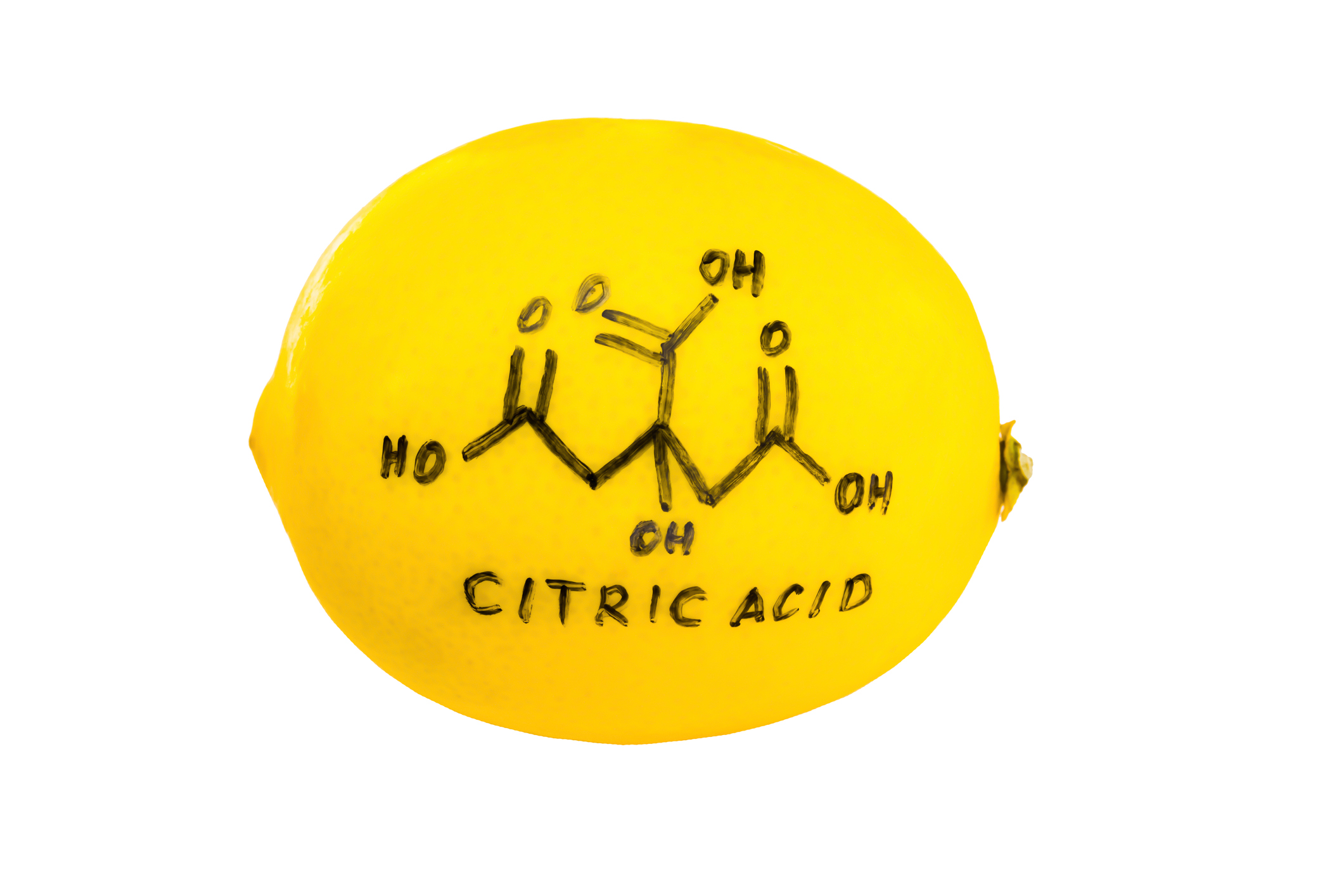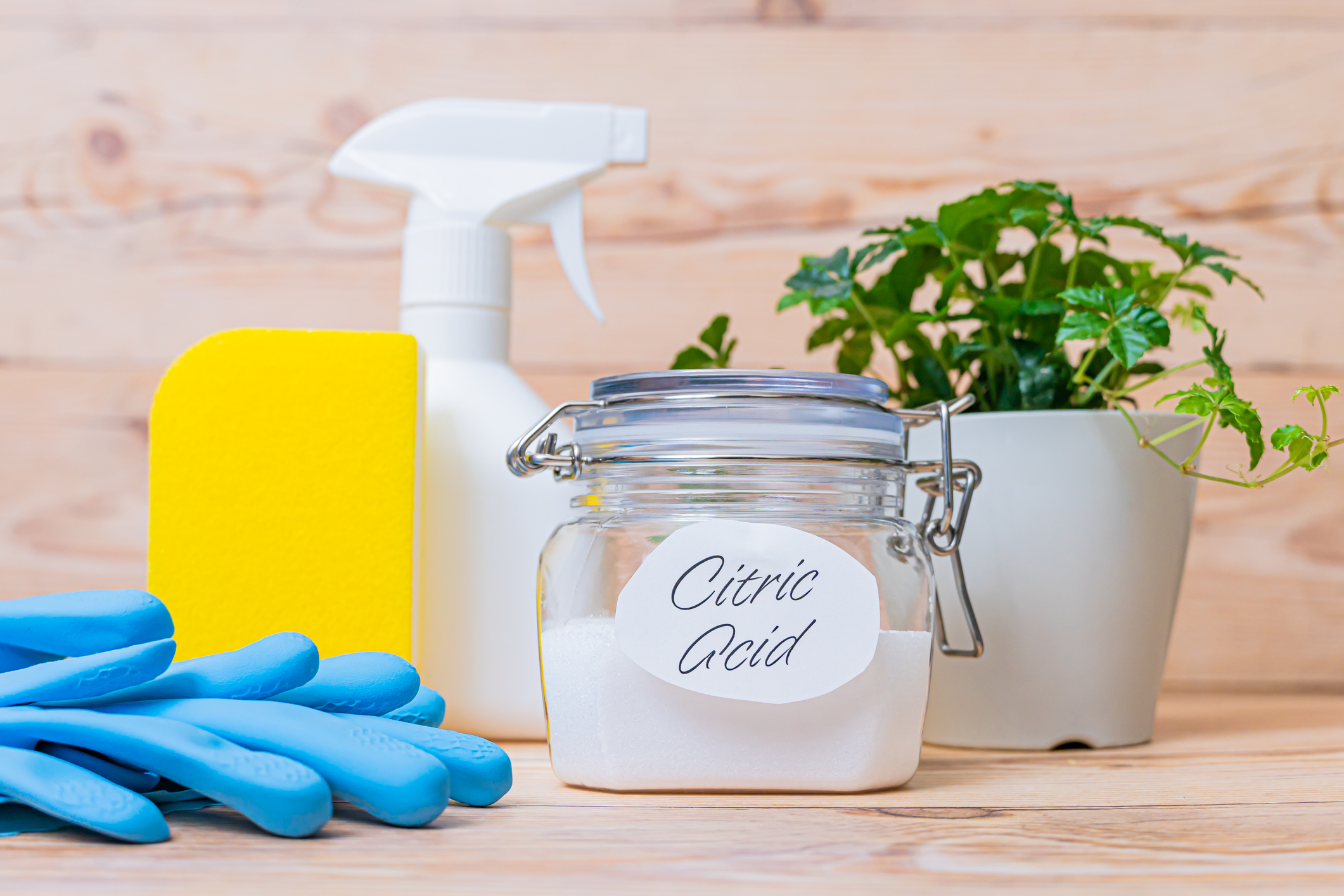- pubmed.ncbi.nlm.nih.gov - Citric acid bioproduction and downstream processing: status, opportunities, and challenges; Sabrina Mores, Luciana Porto de Souza Vandenberghe, Antonio Irineudo Magalhães Júnior, Júlio César de Carvalho, Ariane Fátima Murawski de Mello, Ashok Pandey, Carlos Ricardo Soccol
- webmd.com - Citric Acid; Stephanie Booth
- webmd.com - Citric Acid - Uses, Side Effects, and More
Citric acid - a helper in cooking, but also in cleaning?!

I'm sure we all have citric acid on our kitchen shelf, but do you know what we can use it for besides food and drink?
Article content
Citric acid is also sometimes referred to as sour salt, mainly because of its appearance and taste, as it is made up of tiny crystals with a sour taste.
Citric acid is one of the so-called alpha hydroxy acids. It is also classified as a weak acid.
Alpha hydroxy acids also include, for example:
- lactic acid
- glycolic acid
- malic acid
- tartaric acid
Citric acid occurs naturally in citrus fruits. It is therefore found mainly in:
- limes
- lemons
- oranges
- grapefruits
- but also in other - especially berry-like - fruits
In addition to the above, other fruits and vegetables also contain some citric acid.
However, citric acid is also produced industrially.
Either
- by fermentation
- or by chemical reaction
The general formula of citric acid is C6H8O7 or also C3H5O.(COOH)3.

In addition to the food and cosmetics industry, it is used, for example, as a chelating agent in water treatment. It is also used in the pharmaceutical industry.
Industrially produced citric acid is also found in many types of cleaning agents.
Food industry
Citric acid is used in the food industry mainly for its preservative properties. It is used as a preservative. It keeps food fresh for a longer period of time.
For example, citric acid prevents the browning of apple slices.
Its acidic taste and aroma have many uses in the food industry. It can also help to thicken certain foods, which is why it can be found in many ice creams and sorbets.
However, it also has an indispensable place in countless flavoured drinks.
Its antioxidant action in foods lies in its ability to pick up metal ions - forming chelates. In this way, it can, for example, bind ions to itself:
- calcium
- iron
- copper
Sometimes it is even added to wine to improve its taste.
The pharmaceutical industry
Sodium citrate is added to blood transfusions. Its action prevents blood clotting.
It is also used as a taste corrector, in medicines and dietary supplements intended for oral administration.
Cosmetic industry
Citric acid is added to many cosmetic products. It can be found, for example, in:
- lipsticks
- hairsprays
- deodorants
Its purpose is the same as for food - to extend the shelf life of these products.
The alpha-hydroxy acids used in chemical peels can remove the top layers of dead skin cells from our skin. This can help improve the appearance of aging skin. Citric acid is one of these alpha-hydroxy acids.
Cleansing products
Citric acid can disrupt lime scale deposits. It can therefore be found in products designed for...
- for dishes
- but also for the bathroom
- or for cleaning toilets

It can also be used to remove limescale from washing machines, showers and toilets. In the case of a large and long-lasting layer of limescale, it is a good idea to prepare a solution using white vinegar. Citric acid is then dissolved in it. The solution prepared in this way is more effective.
However, citric acid also helps to remove various stains or neutralise odours.
At the same time, it can also destroy certain types of viruses and bacteria:
- hand sanitizers
- sprays designed to kill moulds
- but also other
Citric acid also acts as a chelating agent. A chelating agent is usually an organic molecule. It can form complexes with heavy metal ions - called chelates.
By binding them to itself, it picks them up from the surrounding environment. Less effective or even ineffective complexes are thus formed.
Therefore, citric acid can also be used to remove toxins from contaminated soil - even in the case of nuclear waste pollution.
Recently, citric acid has experienced something of a renaissance in its use in the home. For example, it is also used in combination with baking soda. These two substances can, for example, remove burns, rust or even disinfect - for example - wooden chopping boards in the kitchen.
Side effects
Citric acid is generally considered safe and harmless. Nevertheless, the following side effects can occur:
- for products intended for external use:
- skin irritation
- pinching
- swelling
- urticaria
Although citric acid is classified as a weak acid, it can cause skin burns in high concentrations.
- When applied to the eyes, it can cause pain and burning
- in the case of preparations intended for consumption:
- Damage to tooth enamel - especially with prolonged and regular consumption (e.g. sweetened drinks, sweets)
- may irritate the stomach - cause nausea or vomiting
More serious side effects have also been described. However, these occur on a very small scale. For example, the following symptoms may occur:
- dizziness
- fatigue
- chest pain or rapid heartbeat
- pain and inflammation
- tingling or even numbness in the hands and feet
Although it may not seem like it, we all encounter citric acid on a daily basis. In food and drink, but also in cosmetic products. However, it certainly finds its place in household cleaning too.
Interesting resources










